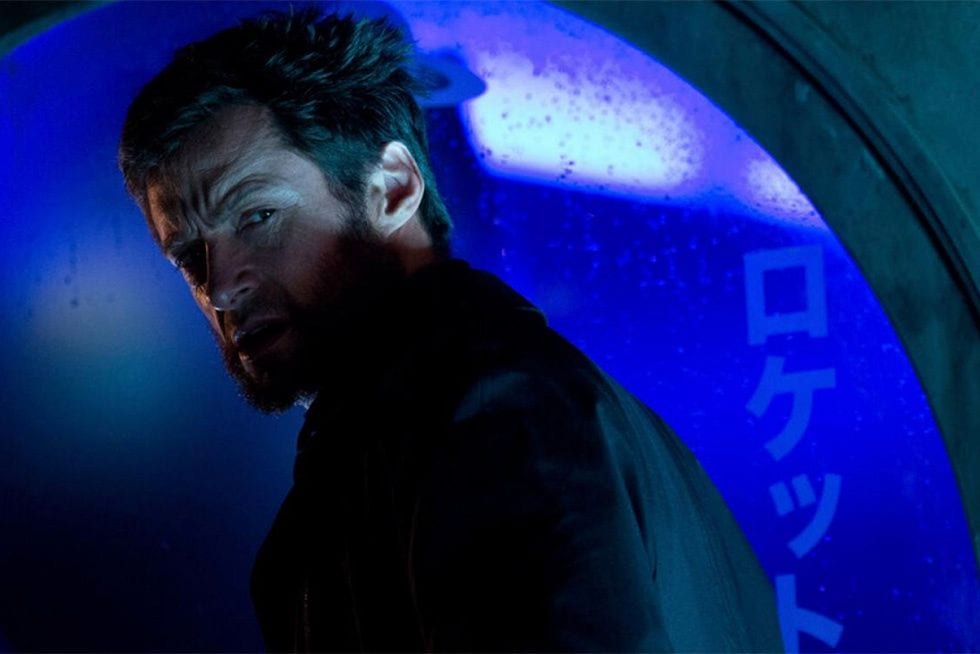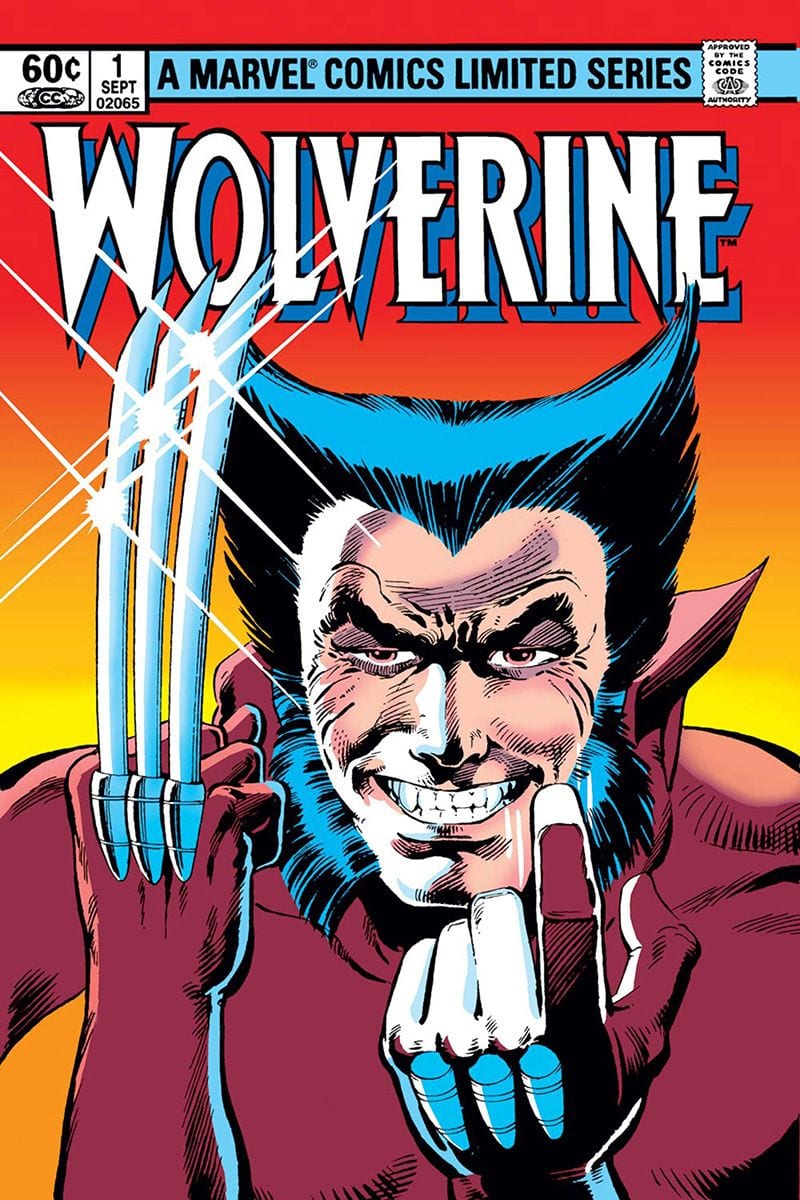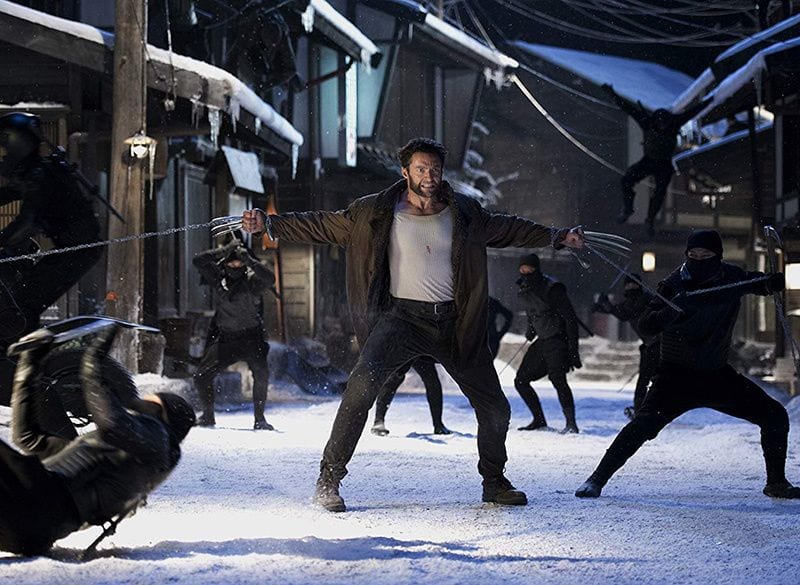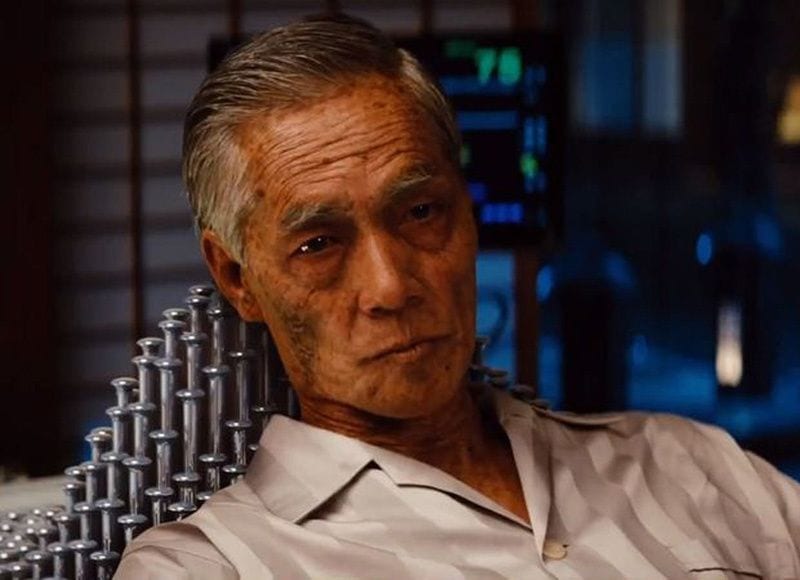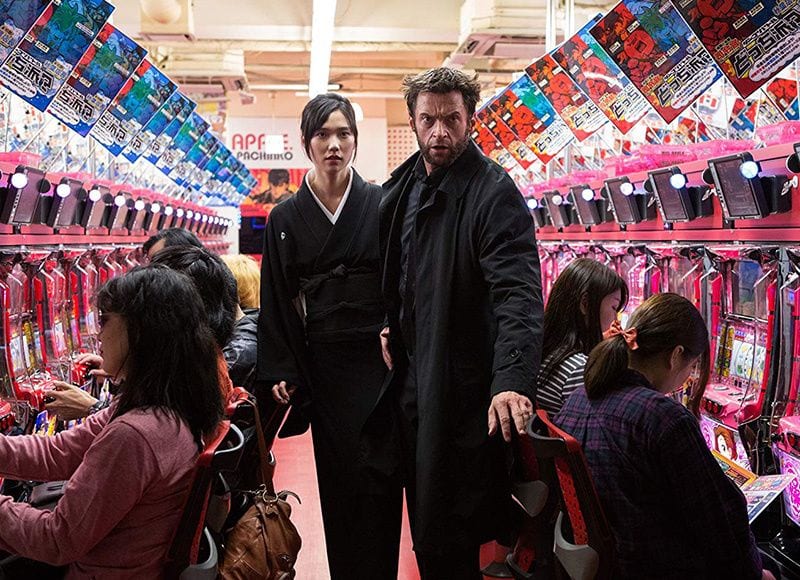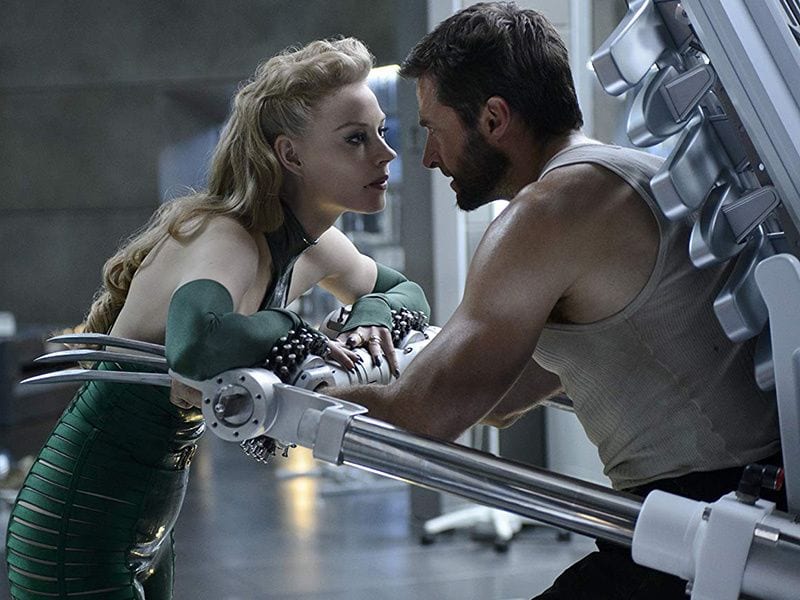After the massive success of Iron Man 3 (Black, 2013) at the beginning of the summer of 2013, there were two more notable comic book films to round out the season. The first and more commercially successful was Man of Steel (Snyder, 2013), the first film in what has been dubbed the DC Extended Universe (DCEU). Although Christopher Nolan’s Dark Knight Trilogy (2005-2012) was a massive, influential success, it had delayed attempts by Warner Bros. to launch its own shared universe to rival the MCU. Neither Nolan nor Dark Knight star Christian Bale seemed interested in opening their grounded Batman epics to other DC superheroes, and it may have been confusing to audiences to introduce a second, simultaneous cinematic Batman. And so, they needed to wait for Nolan’s trilogy to end.
Once it did, with Nolan as executive producer and Dark Knight trilogy screenwriter David S. Goyer on board, the DCEU was launched. Man of Steel certainly takes its cues from the Dark Knight trilogy in terms of visual style (grainy, classical compositions, muted colour palette) and tone (brooding, earnest, cold). These decisions were not particularly appropriate for Superman, however, and the missteps of Man of Steel would reverberate and intensify throughout the DCEU over time. We didn’t know that at the time, though, and Man of Steel was fairly successful and a decent superhero film. I have my quibbles, but I generally liked it.
The final major comic book film of summer 2013, The Wolverine (Mangold, 2013), was less successful commercially than Man of Steel, but is certainly the better film. This was good news for the character, as his last outing was the absolutely dreadful X-Men Origins: Wolverine (Hood, 2009). The failure of Origins is attributable to chaos behind the scenes, with filmmakers and producers clashing over tone and story, a Writer’s Guild strike preventing script revisions, and the studio refusing to delay production to address these issues because it was hellbent on meeting a previously announced release date. With The Wolverine, everyone involved seemed much more focused on producing a good film rather than rushing through issues to make a predetermined release date. And there certainly were issues.
The sequel was announced in early-May 2009, immediately after the strong opening weekend of X-Men Origins: Wolverine. Christopher McQuarrie was hired to write the screenplay in August, and Darren Aronofsky was hired to direct in October. Aronofsky clearly had an interest in superhero films, having worked on an aborted adaptation of Batman: Year One in the early-’00s, immediately prior to Christopher Nolan’s work on Batman Begins (Nolan, 2005). Aronofsky had also directed Wolverine star Hugh Jackman in The Fountain (Aronofsky, 2006). He was known for challenging, unsettling films, and there was a high level of excitement for what he stated would be a different kind of comic book film. Filming was set to begin in March 2011.
Unfortunately, during that month Aronofsky dropped out of the project for personal reasons. He had just broken up with his longtime partner and did not want to film out of the country, away from his family. That same month, Japan, a primary shooting location, was struck with a terrible earthquake and tsunami. In the face of losing their director and Japan entering massive recovery, the production paused to regroup.
This was a welcome difference from the production of Origins, which allowed no delays. In June 2011, James Mangold was hired to direct. Mangold had also previously worked with Jackman on Kate & Leopold (Mangold, 2001). Mangold hired Mark Bomback and Scott Frank to rework McQuarrie’s screenplay, once again delaying filming. In early 2012, with production stabilized, the release date was set for July 2013. Filming began in the summer of 2012, primarily in Australia, with portions also shot in Canada and Japan.
Throughout the years of development, and all of the filmmakers and screenplay revisions, Japan remained a constant element. Even during the production of Origins, everyone involved insisted that the sequel, in whatever shape or form, would be an adaptation the classic, Japan-set Wolverine limited series from 1982. Chris Claremont had been writing the character of Logan/Wolverine his legendary Uncanny X-Men ongoing series since 1975. Logan had emerged as the most popular character in that series, leading Marvel to grant him a four-issue solo series. Claremont teamed with writer and artist Frank Miller, who was in the middle of his own legendary run on Daredevil and brought his pulpy, noir influences to the book.
In the series, Logan discovers that his girlfriend, Mariko, has abruptly severed communication and returned to Japan. He investigates, and learns that Mariko’s father, Shingen, has returned after a long absence and forced her to marry another man, who abuses her. Logan comes into conflict with Shingen, his plans to rule the Japanese underworld, his chief assassin, Yukio, and his ninja warriors, the Hand. But beyond that, Logan must reconcile his animalistic nature with Japanese ideas of respect and honour in order to feel worthy of Mariko. The story is universally considered to be the greatest Wolverine story, as it fundamentally redefined the character. Logan was no longer a two-dimensional, raging berserker, but a man torn between his two natures: the crazed animal and the noble warrior.
Mangold set out to make a more serious Wolverine film, and suggested Jackman give a quieter, more subdued performance inspired by Clint Eastwood in the likes of The Outlaw Josey Wales (Eastwood, 1976). He also made female representation a priority in the film, wanting to focus on Logan’s relationship to women. Paraphrasing Mangold on the film’s commentary: Logan likes women and they tend to call him on his bullshit, making for an interesting dynamic. Speaking of representation, The Wolverine should be applauded for casting actual Japanese actors in all major Japanese roles with only one exception (Will Yun Lee is a Korean-American).
In terms of genre, The Wolverine is inspired by both western films and samurai films, which are really just two sides of the same coin. I’ve always found the interplay between the two genres to be fascinating. Both tend to be period pieces centering on nomadic, loner warriors with strong personal codes of honour that are considered old-fashioned. These warriors typically seek justice or revenge, using their fighting skills to overcome great evil or corruption in their society. Westerns were one of the earliest film genres, arguably beginning with The Great Train Robbery (Porter, 1903). When samurai films became a cornerstone of Japanese cinema in the ’50s, they were initially inspired by westerns but elevated western themes to a more grandiose, mythical scale. Western filmmakers, in turn, were inspired by these samurai films, elevating their genre. Most directly, The Seven Samurai (Kurosawa, 1954) was remade as The Magnificent Seven (Sturges, 1960), and Yojimbo (Kurosawa, 1961) was remade as A Fistful of Dollars (Leone, 1964). More recently, Quentin Tarantino explored the similarities of the genres when he seamlessly blended them in Kill Bill: Vol. 1 (Tarantino, 2003) and Kill Bill: Vol. 2 (Tarantino, 2004). Arguably the former is more samurai-inspired and the latter is more spaghetti western-inspired, but they work best as one continuous film.
Claremont and Miller recognized in 1982 that Logan fit perfectly into the samurai/cowboy mold: an old-fashioned, honourable, lonely warrior out for justice and revenge. Mangold and his collaborators seemed to agree, and many aspects of these genres appear in both The Wolverine and Logan (Mangold, 2017). These influences also, I believe, contribute to The Wolverine‘s greatest strength: its slow, thoughtful pace. Samurai and western films are not known for their fast pacing, and that benefits The Wolverine a great deal. There’s action, and it’s generally very well-staged, but the film takes its time to explore Logan’s state of mind, his exhaustion and guilt, and his road to recovery. My biggest criticism of the film is the comic-booky action climax, which is tacked-on and out-of-place in an otherwise soulful film.
The Wolverine opens in a prisoner-of-war camp outside of Nagasaki, Japan, on 9 August 1945. As American planes fly towards the city with an atomic bomb, the soldiers in the camp panic. One officer, Yashida (Ken Yamamura), frees all of the prisoners, including Logan (Hugh Jackman), who’s being held separately in a sealed well. As the other officers commit suicide, Yashida hesitates and is pulled into the well by Logan. When the atomic explosion reaches the well, Logan shields Yashida with a metal door and takes the brunt of the blast. Much to Yashida’s amazement, Logan fully heals from his burns in seconds. They wait for the nuclear fallout to dissipate, then emerge from the well and part ways, with Yashida owing Logan a debt. The sequence is stunning, establishing Logan’s healing, relative immortality and history with Japan against a devastating historical backdrop.
We next meet Logan in a dream with Jean Grey (Famke Janssen). Jean was last seen in X-Men: The Last Stand (Ratner, 2006), when her powers went out-of-control and Logan was forced to kill her. Logan loved Jean, and is haunted by the guilt of killing her. These Jean-centric dream sequences are peppered throughout as a neat way of depicting Logan’s innermost thoughts and doubts. The decision to set The Wolverine after The Last Stand is interesting. On the one hand, it mostly frees the film from continuity, since a film taking place earlier, before Logan’s appearance in X-Men (Singer, 2000), may have been compelled to somehow set up that film. Setting The Wolverine later allows it to stand on its own and leave its ending in doubt. It also helps that the later time period accentuates Logan’s unnaturally long life and his feelings of loss. On the other hand, The Last Stand was a terrible film that was actively being erased from continuity by the next X-Men film, X-Men: Days of Future Past (Singer, 2014). Most filmmakers might have distanced themselves from it.
Logan is lost, sworn off of violence and living alone in the forests of northern Canada. He’s weighed down his never-ending life and certainty that everyone he loves will die. This is seemingly confirmed when a grizzly bear, whose territory borders Logan’s, is attacked with illegal poison arrows by a group of rowdy hunters. Logan kills the bear to ease its suffering (forced to kill another friend) and tracks the hunters to a bar. A version of this incident opens the Claremont/Miller series, and it plays very well here. Jackman is excellent as Logan, playing the character’s simmering anger and seriousness while allowing just enough charisma to shine through. He is prevented from killing the hunters by Yukio (Rila Fukushima), a highly-trained fighter sent by Yashida (Haruhiko Yamanouchi) to bring Logan to Japan. Yashida, now very old and near-death, is the head of a highly-successful technology corporation. Logan agrees to visit him briefly to say his goodbyes.
The Japanese landscapes are gorgeous and give The Wolverine a unique flavour, distinct from most comic book films. From the neon-lit Tokyo at night, to Yoshida’s traditional Japanese home, to later scenes in serene, picturesque Nagasaki and an evocative, snow-covered mountain village, Mangold uses Japan’s distinct visuals to their fullest. Yashida’s home is particularly interesting, with its sliding paper doors, dojos and classical murals contrasted with the highly advanced medical technologies keeping him alive.
Logan is taken aback when he meets with Yashida. Rather than saying goodbye, the old man claims to have determined how to transfer Logan’s healing into himself. Yashida would be saved from death, and Logan would finally be allowed the death he has craved. In this way, Yashida feels he is repaying his debt. Logan refuses, but later contemplates the possibility of ending his suffering. Yashida shocks his family by announcing that he will give ownership of his corporation to his granddaughter Mariko (Tao Okamoto) rather than his son, Shingen (Hiroyuki Sanada). This enrages Shingen, and makes Mariko distraught enough to attempt to jump off of a cliff. Logan saves her. That night, Yashida dies suddenly, setting multiple conflicting agendas in motion. Shingen and Mariko’s finance (Brian Tee) conspire to assassinate her before the will is read. Meanwhile, Yashida’s mysterious doctor, Dr. Green (Svetlana Khodchenkova), takes an interest in Logan, and works with Harada (Will Yun Lee) to follow him and to keep Mariko safe.
Things come to a head at Yashida’s funeral at a temple in Tokyo. Logan attends, and tension builds with many sharp glances exchanged between the principal cast, which invoke western/samurai films. Logan has a growing sense that something is amiss. It’s also interesting to place the film’s hero in the centre of a culture he doesn’t understand, amongst a large group of strangers, and force him to figure out how to proceed. When Shingen’s assassins grab Yukio, Logan jumps in to save her. But as he’s shot and beaten by the assassins, he begins to realize that something is unusual. He feels pain more acutely and doesn’t heal quickly. Nevertheless, he fights off the assassins with the help of Yukio and Harada, and grabs Mariko for a foot-chase through Tokyo. The chase is visceral and handheld, contrasting with the film’s typically locked down camera. Mangold admits in the commentary that he shot the sequence guerrilla style, having his performers run and act on real, open streets and stealing shots. This certainly gives the scene a visceral energy.
Logan begins to slow from the pain of his wounds, but he follows Mariko onto a bullet train. He’s gruff and frank with Mariko about her dangerous situation, which is both perfectly in-character for Logan and a nice contrast to Mariko’s quiet reserve. Some of the assassins board the train, and Logan fights them between cars. When he rips a hole in the side of the train with his claws, Logan and several assassins are sucked outside of the 300 mph vehicle. This is the best-remembered sequence of the film for most viewers, the kind of inventive action scene that even detractors admitted was a highlight. Logan drives his claws into the roof of the train to hold himself in place, while the assassins do the same with knives. They attempt to fight as they either duck or jump over low-hanging signs. It’s an exciting play on the old western standard of a fight atop a moving train, except this one is traveling significantly faster. Logan cleverly makes one assassin think he needs to jump over an upcoming sign, but actually ducks while the assassin hits the sign. Logan then dispatches the final assassin by releasing himself from the train, flying towards him with his claws out in a perfect recreation of a common Wolverine pose from the comics.
After the train sequence, the film slows down significantly. Logan brings Mariko to a seedy hotel to hide, but he passes out from his wounds. After Mariko brings him to a veterinary student to be patched up, they travel to one of her father’s houses outside Nagasaki. Removing the hero’s powers is the most common trope of a superhero sequel, but The Wolverine is one of the better examples. Logan’s healing makes him incredibly powerful, nearly immortal. But this film delves into the negatives of such a gift: the emotional exhaustion, the guilt, the loneliness and sadness built up from decades of dead friends and lovers. Although he doesn’t understand why he has stopped healing, it gives Logan the opportunity to experience a mortal life. He takes time to recover and gets tired from manual labour. He also finds comfort and calm in Mariko, and begins to imagine the possibility of having a normal life and moving on from Jean.
These scenes are beautifully shot against the backdrop of Nagasaki, and Jackman and Okamoto play them well. There’s precious little time in the film to explore all of this character growth, the healing of Logan’s soul, his budding romance with Mariko, but Mangold allows the sequence more time than would most action blockbusters. The highlight occurs after they’ve slept together, when Logan awakens from a nightmare about Jean. Mariko is calm and unafraid, stroking the claws gently as she describes her grandfather’s bedtime stories about the Wolverine. She asks about Jean, and Logan admits that he killed her. The scene is nicely played on both sides, and it provides credibility to Logan’s feelings for Mariko and motivation when the plot kicks back in.
Logan wakes to the sounds of Mariko being kidnapped by Shingen’s men. He reunites with Yukio to go after her. This is where the modern-day western style really kicks into gear, with Logan as the grizzled warrior hellbent on justice. He angrily interrogates Mariko’s fiancé in a hotel room to learn of Shingen’s plan, then throws him out the window into a pool many stories below. Yukio asks how Logan knew there was a pool there, and Logan replies “I didn’t.” It’s a fun beat that recalls the hard-boiled action films of the ’60s or ’70s starring Clint Eastwood or Charles Bronson. By the time Logan and Yukio reach Yashida’s home, Mariko has already been taken by Harada and Dr. Green for an unclear purpose. Logan uses Yashida’s medical equipment to scan himself, and he discovers that one of Green’s tiny medical robots is attached to his heart, likely preventing his healing.
As Logan cuts into his chest to remove the robot, Shingen appears and fights with Yukio. The frantic scene of Yukio and Shingen having a well-staged swordfight around the table where Logan is digging into his chest cavity is unforgettable. Logan flatlines as Yukio is overpowered, and Shingen goes for the killing blow. Logan stops him, though, as his healing has returned. The climax of the Claremont/Miller series was the duel between Logan and Shingen, and fans of that story should not be disappointed by this fight. Jackman has never seemed more imposing than here, as his Wolverine approaches Shingen with the confidence of an immortal. The fight is atmospheric, taking place in a darkened dojo with rain pouring dramatically outside. Logan quickly heals from each attack and keeps coming. He tries to spare Shingen, however, claiming that the knowledge that he tried to kill his own daughter should be enough punishment. Shingen attacks one more time, and Logan kills him.
Unfortunately, this is not the end of the film, although the fight was intimate enough to fit quite well with the quieter Nagasaki section that preceded it. Instead of wrapping up shortly after the Shingen plot resolves, The Wolverine continues past it to the larger mystery underlying the film. Logan and Yukio travel to a Yashida facility in the mountains to find Mariko. Logan strolls into the town like a gunslinger ready to face down a gang of criminals. Rather than dangerous cowboys in a dusty frontier town, however, he encounters black-clad ninjas led by Harada in a snow-covered mountain village. There are two versions of The Wolverine: the theatrical cut and the unrated extended cut. The extended cut features more blood and violence, but also an extended version of this fight. The extended fight is much better, and gives Yukio something to do. Both end, however, with Logan captured and brought to the Yoshida facility.
Here, the truth comes out. Dr. Green diminished Logan’s healing as a test. Meanwhile, Yashida is still alive, wearing a large samurai suit made out of adamantium, the unbreakable metal that coats Logan’s bones. Yashida plans to use it to finally take Logan’s healing powers, making himself young and immortal. The contrast between Logan and Yashida is interesting: Logan has lived for a long time and is weary of life, Yashida has lived a long time and wants to continue living. It was clear from the first scene, when Yashida hesitated to kill himself along with his fellow officers, that he didn’t want to die.
However, an action climax between Logan and a giant, mechanized samurai suit doesn’t speak well to this conflict. Logan already found the will to live again in quiet scenes with Mariko, and the blaring effects of his battle with Yashida are garish by comparison. Yashida has also been absent from the film for so long at this point that the ending is disconnected from the rest of the film. The middle portion was focused on Shingen trying to kill Mariko to take back his inheritance, but Yashida never died so Shingen’s actions were meaningless and the climax undermines it. The sequence seems tacked on to give The Wolverine the big superhero action scene that it was lacking up to this point. I really liked how most of the film handled mutants. Characters knew that they existed, that they were around, but their powers were subtle. Logan’s healing was not overused and then it was gone. Dr. Green can spit or breathe different toxins, but that was also not overused. In the climax, however, while Logan fights a giant metal samurai, Dr. Green sheds her skin like a snake and battles Yukio. It’s over-the-top, and out-of-sync with the film’s beautiful quiet moments.
Yashida uses a heated adamantium sword to cut off Logan’s metal claws, then seems to suck the regenerative powers out of Logan’s very bones. Logan nearly dies, until Mariko throws knives at her grandfather to stop him. Logan recovers, pops out his claws which are now merely bones, tears the samurai suit apart and throws Yashida down a cliff. He then passes out and “sees” Jean one last time — and lets her go. The film ends with Logan saying farewell to Mariko, too, then boarding her private plane with Yukio to rejoin the world for another adventure.
It’s a nice enough ending, but a little disappointing in retrospect, since we never revisit these Japanese characters again. I would have enjoyed seeing Logan’s romance with Mariko develop, and all of the adventures he gotten into with Yukio by his side. Instead, the X-Men timeline was rewritten by X-Men: Days of Future Past (Singer, 2014) the next year, erasing the events of The Wolverine from the timeline. Fortunately, Mangold returned to make another solo Wolverine film entitled Logan (Mangold, 2017), and that’s one of the best superhero films ever made. So maybe it’s a good thing that the timeline was reset. While watching The Wolverine, I couldn’t help but look for seeds of the greatness that Mangold would bring to the series in his next installment. Thematically and tonally the films are very similar, and Logan also draws from western films, such as Unforgiven (Eastwood, 1992). But ultimately, The Wolverine is simply a well-made, conventional superhero film.
The release of The Wolverine was delayed until September 2013 in Japan to avoid coinciding with the anniversary of the American bombing of Hiroshima and Nagasaki, which was a wise choice. In Japan, the title translates to Wolverine: Samurai. Worldwide, the film was the second-highest grossing X-Men film up to that point with $415 million, although it shockingly dropped 22 percent in Japan from the previous Wolverine film. In North America, however, it remains the lowest-grossing X-Men film, grossing $132 million. It sold less than half as many tickets as the series high-points X2: X-Men United (Singer, 2003) and The Last Stand. This also demonstrated a discouraging trend, as the last X-Men film, X-Men: First Class (Vaughn, 2011), also underperformed and The Wolverine made even less than that. The two films represented a turning point in terms of quality, but a commercial nadir for the series. The diminishing returns put the future of the X-Men films in doubt. The budget of The Wolverine was $120 million, down from $150 million for X-Men Origins: Wolverine, and the budget of Logan would be cut even further. Thankfully, that lower budget gave Mangold and Jackman the excuse to make a consistently slow-paced, quiet superhero film devoid of giant, mechanized suits of armour in the next installment. The Wolverine trilogy had started out poorly and improved dramatically with The Wolverine, but the best was still yet to come.
***
Stan Lee Cameo Corner: No Stan Lee here. That is 17 cameos in 29 films.
Credits Scene(s): The mid-credits scene is the clearest indication up to that point that Fox intended to consolidate their X-Men films into a shared universe. This scene was directed by Mangold on the set of X-Men: Days of Future Past, and written by the screenwriter and director of that film. Two years after the events of The Wolverine, Logan is approached by Magneto (Ian McKellan) in an airport about helping him fight a threat to mutants. When Logan is skeptical of Magneto’s motives, Professor Charles Xavier (Patrick Stewart), who died in The Last Stand, appears to reassure him.
First Appearances:
- Director James Mangold returned to direct and cowrite Logan (Mangold, 2017) along with screenwriter Scott Frank
- Other Mangold collaborators such as composer Marco Beltrami and editor Michael McCusker also returned for Logan
Next Time: The fallout from The Avengers continues in Thor: The Dark World.
- The Rise Fall and Rise of Marvel Comics on Film Part 3: Our ...
- Re: Purpose: Is Summer 2013 a High Noon for the Superhero Movie ...
- 'X-men-Origins: Wolverine' Can't Tell Which Story to Tell - PopMatters
- Bloody 'Logan' Is a Worthy Sendoff for Hugh Jackman - PopMatters
- Killing Is Killing: Logan's Enduring Excellence - PopMatters
- 'The Wolverine': Not So X-Men - PopMatters
- Turning Half Japanese: 'The Wolverine' - PopMatters

